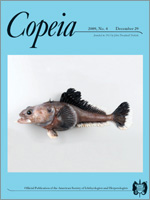I investigated the contributions of several life-history traits to small body size in the two smallest species of the genus Desmognathus, D. aeneus and D. wrighti. The research was conducted in the southern Nantahala Mountains of western North Carolina, where the two species co-occur and are similar in body size and life history. Desmognathus ocoee, the next-smallest species in the local Desmognathus assemblage of six species, served as a reference species. All three species have similar juvenile growth rates. Desmognathus aeneus and D. wrighti have smaller propagule sizes (i.e., egg and hatching sizes) and higher developmental rates to sexual maturation than D. ocoee. These two factors, especially the latter, appear to explain much of the difference in adult size between D. ocoee and both D. aeneus and D. wrighti. Thus, miniaturization in D. aeneus and D. wrighti may be mainly a product of acceleration in developmental rate. I suggest that body size itself, rather than other, correlated life-history traits, has been the target of selection in these two species, in response to ecological opportunities for small salamanders in the mesic forests of the southern Appalachian Mountains.
How to translate text using browser tools
29 December 2009
Life-History Contributions to Miniaturization in the Salamander Genus Desmognathus (Urodela: Plethodontidae)
Richard C. Bruce
ACCESS THE FULL ARTICLE





